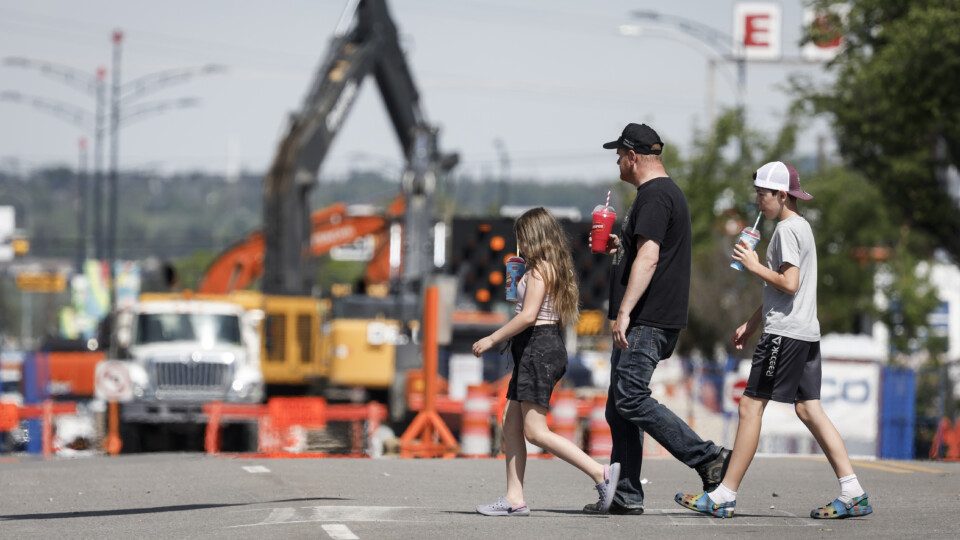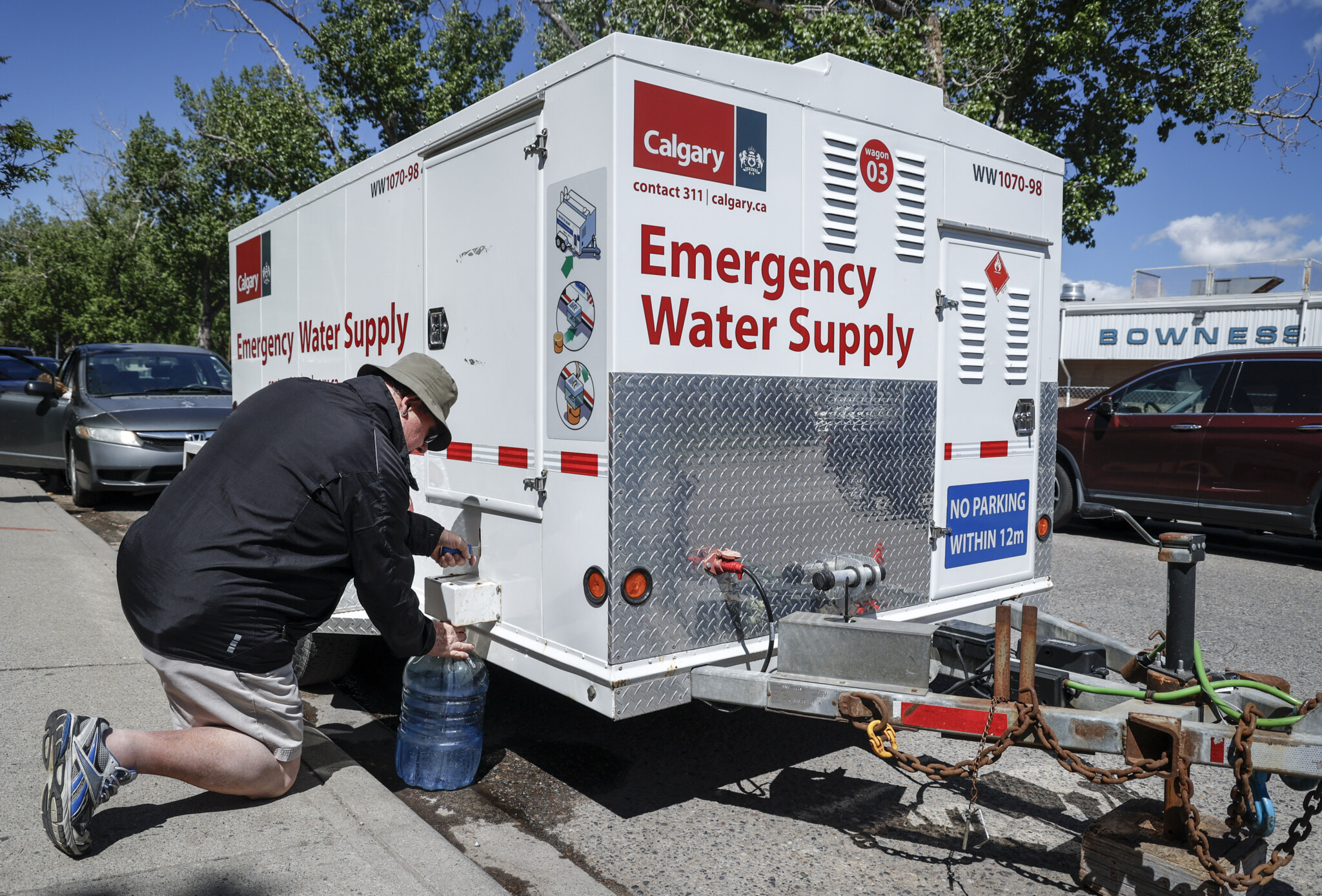Infra
Christopher Hume: Funding civic infrastructure isn’t sexy but we’ll regret neglecting it—just ask Calgarians

Even if municipal leaders across Canada were shocked when a major Calgary water main burst on June 5 leaving residents of Canada’s fourth-largest city without basic water, they certainly weren’t surprised. As they all know only too well, a similar “catastrophe” could have occurred in any of their towns and cities, where they struggle to maintain their infrastructure and keep the water flowing.
None of them admitted as much, however—not out loud, anyway—but the fact is that the civic infrastructure in Canada is generally not in a state of good repair. It’s long past its best-before date and was cheaply built in the first place.
Although infrastructure is largely invisible and far from sexy, it makes Canadian life as we know it possible. Roads. Bridges. Hydrolines. Railways. Sewers. Pipes. No need to remind Calgarians how important this all is; measuring out their water usage one toilet flush at a time for what could be the next two weeks, they are learning the lesson the hard way.
Of course, disasters like Calgary’s don’t happen by accident; they require decades of conscious neglect before collapse becomes inevitable. Calgary’s pipe had not been inspected in 10 years. Still, Calgary was so completely unprepared it had to rely on the kindness of American strangers at the San Diego County Water Authority to provide the massive ducts needed to get its system up and running. If that wasn’t enough, while searching for the main break, engineers discovered “significant” additional damage in five locations. It will be days yet until residents can hit the bathroom without stopping to ask themselves whether their desperation justifies the visit.
More than anything, the Calgary episode is a textbook case of what can happen when infrastructure upkeep is not a priority. Once the pipes are buried, the tracks laid, and the cables installed, we’d rather forget about them.
That may be human nature, but Canada’s perennially cash-strapped cities don’t help. Instead, they do everything possible to avoid telling residents they’re on the hook for the maintenance of publicly owned assets. The results aren’t pretty. In Toronto, for example, where voters historically prefer mayors who swear they won’t hike taxes, the infrastructure realm is generally acknowledged to be a mess. From potholes and parks to transit and traffic enforcement, municipal services have deteriorated to the point where an unabashed lefty, Olivia Chow, overcame Toronto’s post-amalgamation conservatism and won the mayoralty handily. In short order, Her Worship raised property taxes by nearly 10 percent and promised to restore the dignity, if not basic cleanliness, to the shared spaces of the city.
“[W]e are adding in a lot more money for state of good repair funding. It’s $1.6 billion through the 2024 budget process, but it’s nowhere near enough. We’re just treading water,” said Chow this summer.
Exactly one year after her election win, we Toronto residents are anxiously awaiting results.
The underlying issue, now as always, is the vagaries of a governance system that leaves civic jurisdictions without adequate revenue sources or powers of self-determination. Municipalities in this country are considered “creatures of province.” That might have made sense in the 19th century, but today most Canadians have long since left the farm. 80 percent of Canadians now live in suburbs, cities, and towns. We are a thoroughly urban nation.
It’s no surprise, then, that although municipalities get a paltry 10 percent of taxes collected in Canada, they are responsible for 60 percent of the country’s infrastructure. Cities, which receive none of the more elastic levies such as income and sales taxes, depend almost entirely on property assessments. Other than user fees and a few minor surcharges, that’s it.

Bryce Gibson fills a water jug from an emergency supply provided by the city as work to repair a major water main contineues in Calgary, June 7, 2024. Jeff McIntosh/The Canadian Press.
As a 2003 report (yes, we’ve had more than 20 years of warnings) by the Federation of Canadian Municipalities put it:
In spite of recent increases in public infrastructure investments, municipal infrastructure is decaying faster than it is being renewed. Factors such as low funding, population growth, tighter health and environmental requirements, poor quality control leading to inferior installation, inadequate inspection and maintenance, and lack of consistency and uniformity in design, construction and operation practices have impacted on municipal infrastructure. At the same time, an increased burden on infrastructure due to significant growth in some sectors tends to quicken the ageing process while increasing the social and monetary cost of service disruptions due to maintenance, repairs or replacement.
Keep in mind this was when Canada’s population was 9.4 million fewer people.
Today, estimates of Canada’s “infrastructure deficit”—the amount needed to pay for delayed capital projects cities deem necessary—range from $110 to $270 billion. Toronto’s “funding gap” is $26 billion. Calgary’s is $7.7 billion.
Again, Calgary’s failed water main is illustrative; it was only 49 years into its stated lifespan of 100 years when it ruptured. Though that pipe life expectancy number is most likely overly optimistic, clearly local authorities believed there was no cause for concern. Meanwhile, at least 50 percent of Toronto’s water mains are more than half a century old. Fifteen percent are more than 100 years old. In Ottawa, 27 percent percent of the city’s piped infrastructure is more than four decades old.
Let’s not forget that many of these facts and figures represent only a portion of total infrastructure costs. Municipal responsibilities also include public transit, sewers, roads, bridges, snow ploughing, and solid waste, not to mention policing and by-law enforcement.
When Mayor Chow convinced Ontario Premier Doug Ford to take responsibility for the Don Valley Parkway and the Gardiner Expressway in 2023, she freed up $1.2 billion for Toronto over the next three years. Though not enough to save the city, in Chow’s words, it represents “a wonderful first step.” We’ll again have to wait to see if this newfound money will in fact be spent on addressing the city’s buckling but unsexy infrastructure.
As Ford observed at the time, “When Toronto succeeds, Ontario succeeds. When Ontario succeeds, Canada succeeds.” No kidding.
Out West, Calgary mayor Jyoti Gondek seemed to shift blame for the current crisis towards her provincial parent.
“I have to say that without a strong partnership from the provincial and the federal governments, the city takes on the full cost of maintenance work,” she told Global News.
Alberta’s Municipal Affairs Minister, Ric McIver, responded with the usual impenetrable boilerplate. “Alberta’s government,” he said, “supports the City of Calgary in its decision to declare a state of local emergency as this step signifies the critical state of Calgary’s water infrastructure and the work that must happen expeditiously in order to return to normal…[W]e support the city in any way that is needed.”
Translation: “Don’t call us, we’ll call you.”


)






